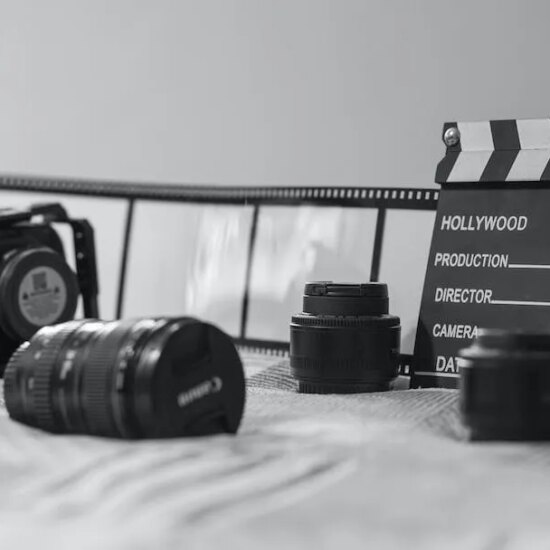Like going to the gym, there are certain screenwriting exercises that work. And it’s reassuring to know that I can maintain, and even enhance my screenwriting profile by throwing away worry, and just exercise.
Ive written tonnes and tonnes. I often worry that my skills have plateaued. But like going to the gym, I think a new routine my help shake up your lethargy and get you flowing.
Creative writing is a challenging art form. And screenwriting even more so. Screenwriting demands an understanding of the craft as well as the business side.
Above all, to become a successful screenwriter you need to become a successful storyteller. And a storyteller that uses the visual medium.
Screenwriters, like storytellers, need to master the fundamentals of storytelling, character development, and plot structure.
Ive been working with writers since 1992 here at Raindance. I have noted down seven distinct exercises that i just know will help you. Be you a professional, or an emerging creative seeking to explore storytelling, these exercises will work for you.
7 Screenwriting Exercises That Work
Here are some of the exercises I use, and ones that I use with emerging screenwriters in the 5 night Screenwriters Foundation Certificate..
Let’s get you going!
Exercises That Make You a Better Storyteller?
If you are like me, the idea of doing exercises fills me with dread. But sometimes it’s worth shaking up the daily routine to see what comes out of it.
A lot of these exercises don’t involve typing at all – but working with scissors, crayons and a glue pot. And what could be more random than that? And don’t worry if you think you can’t draw!
1.Write the title, then the logline
A logline is a one-sentence summary of your screenplay. I learned this from the master of storytelling himself, Roger Corman..
Way back in 1996, Roger was a guest of the Raindance Film Festival and I spent an entire week with him. He’s a morning guy and would come to my office with all the British broadsheets. Over a coffee, he would tear keywords out of the headlines and mash them up. If he saw something he liked, he would add in a log line. And presto, he’d have a new movie idea.
For example: The Little Shop Of Horrors ” the flowers that kill in the spring”
Other of his films didn’t need a tagline, like Death race.
2. Make the poster/design the ad
Why would you go to all the trouble of writing a script, when no one may want to buy it? Why not make the poster first? `flash it around on your social media and see if you get any bites, and then write the damn thing?
Back to the Roger Corman story. He told me that when he found a good title and tagline, he would hire a designer. Each night he would come back to my office and see the posters the designers had come up with in LA. If he liked them, he would show them to financiers in London. If he had a big bite from a financier or distributor, he told me, that upon his return to London in a fortnight, he would hire a screenwriter to write the movie the poster suggested.

3. Write 6 lines
And here’s another poster trick that will help your writing.
If you want a great poster, you’ll need a great designer. I collaborate with Robyn Larkin of Whatisbobo.com. Robyn and his team deliver over 400 posters a year. Meaning, with over 20 years of experience, Robyn knows how to create the visual image.
But this is what he needs from you: Two 3 0r 4 line paragraphs where you tell the story. No fluff. Just the meat.
Now, thats a writing exercise! Get to it!
4. Write the business plan
Who says you need a finished script to get the money to make the film? And if you are stuck on writing, why not get the Title, Logline and Poster together. And then, voila, make the business plan.
I learned this tip and tricks from one of the most prolific writer/director/producers I know, Ate de Jong. Ate tells me that you do not need a screenplay to get the money to make a film. You need a business plan. And the business plan exists to raise the money while the writer is writing and re-writing the screenplay to fit the budget and the cast. Those six lines from Number 3 (above) are about all you need for the business plan at this point.
Getting the business plan together will rhone your creative vision razor sharp.
If you need some help, check out the Creating A Business Plan course at Raindance.
5. Develop the verbal pitch
When a friend hears you are writing a script, do they ever ask you ‘Tell me about it?” Do you enjoy that moment or does it fill you with dread?
Developing a starting verbal pitch is a key marketing tool, as well as a way to go back over your idea and tighten things up. If you want to hear a dozen or two pitches for new movies on a single night, check out the Live!Ammunition! Pitching Competition at Raindance.You’ll hear grest pitches, and great comments from a panel that can make movies happen.
6. Read the trades
The creative industries are moving and transforming at ta breakneck speed.
Here are the trades I review daily:
SCREEN DAILY
DEADLINE
INDIEWIRE
HOLLYWOOD REPORTER
VARIETY
ADWEEK
7. Collaborate
Its al about who yo know. Not what you know. Find filmmaking groups and join in.
Monthly in person networking events
Raindance Toronto Connect & Create
Raindance Vancouver Boozin N Schmoozin
Raindance London Boozin N Schmoozin
Monthly online networking
CollabWriters Networking
If you know iof a good networking group, please add it into the comments below!
Fade Out
We have never needed writers and screenwriters more than ever before. We turn to story to process all the changes and terrible news we are surrounded with. And to you, writers and screenwriters, we need to see how to process everything. And to work together to make a better world.















